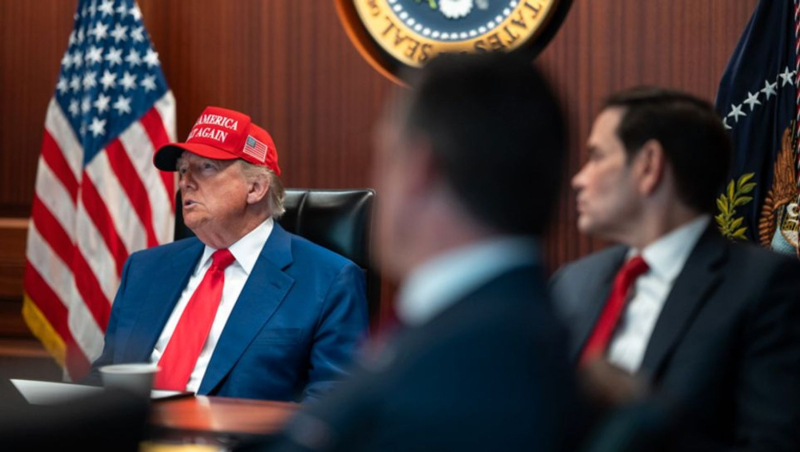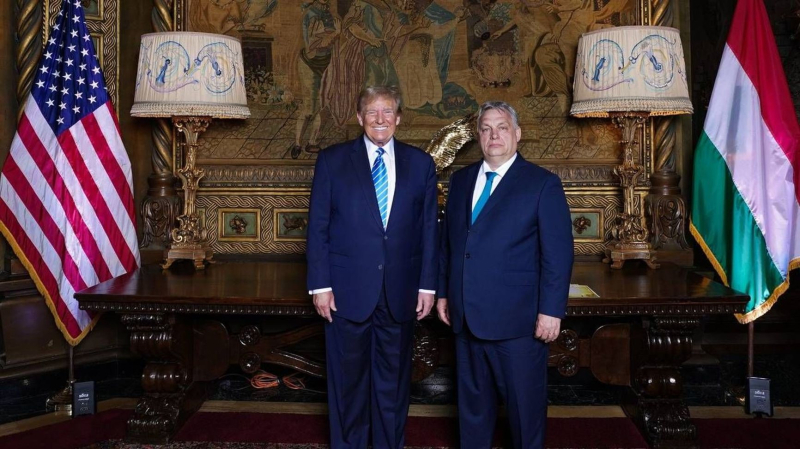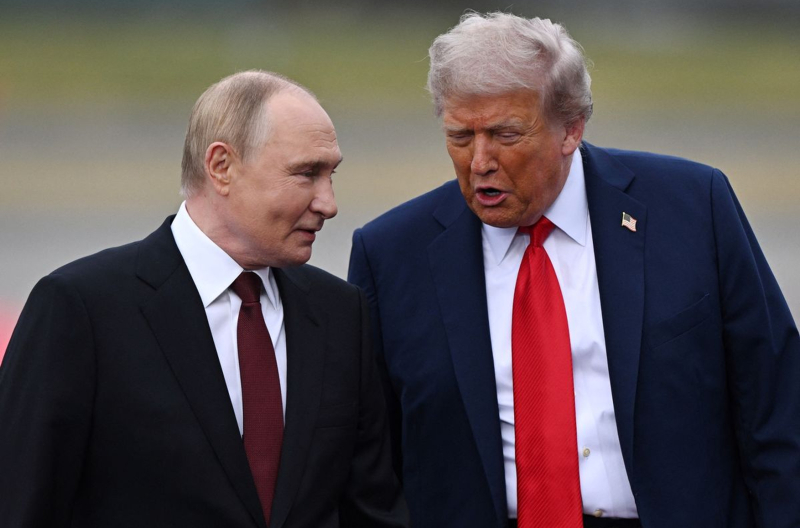On Aug. 22, Donald Trump told reporters in the Oval Office that sweeping sanctions against Russia remained possible and added that the United States might even withdraw from the negotiating process altogether. It was not the first time the U.S. president lurched from one extreme to the other. Ahead of his planned meeting with Vladimir Putin in Alaska, panic had set in: fears that Ukraine would be betrayed, that Trump would legitimize the Russian leader, that sanctions would be lifted, and that Europe pushed aside. Instead, what followed was a summit with Volodymyr Zelensky and European leaders, after which Trump announced plans for a meeting between the Ukrainian and Russian presidents and hinted at sensational concessions from Moscow. However, in the end, the Kremlin said its positions had been misunderstood, Putin appeared unlikely to travel to any future meetings, and Trump was suddenly talking about Kyiv’s right to launch a counteroffensive. After weeks of noise, the status quo remains largely unchanged.
Blowback after an offer
Trump’s meeting with Zelensky in Washington — where the Ukrainian president was supported by the leaders of France, Finland, Britain, Germany, and Italy, plus NATO’s secretary general and the head of the European Commission — went unexpectedly well. Zelensky rejected any notion of a “land swap,” refusing to recognize Russian sovereignty over any occupied territory. Trump was cordial and ended the event saying he hoped to organize a one-on-one meeting between Zelensky and Putin soon — to be followed by trilateral talks with himself as mediator and, eventually, a broader summit with European leaders. He did not back away from supplying arms to Ukraine, though he said deliveries would run through NATO and be financed by Europe.
During the meeting, Trump even phoned Putin, who, according to the American president, confirmed his readiness for talks and allegedly pressed for a face-to-face with Zelensky. Trump also claimed Putin did not object to the idea of deploying European peacekeepers in Ukraine once fighting ended. Trump also called Hungarian Prime Minister Viktor Orban to ask why Budapest was blocking Ukraine’s entry into the European Union. Many saw this as a signal to step aside and allow Ukraine to integrate more closely with Europe, lifting the burden from the U.S. both for financing the war and for organizing any peace talks.
The picture sounded suspiciously upbeat given the situation on the ground in Ukraine, and it should have come as no surprise that the optimistic scenario painted after the White House meeting soon returned to reality. Putin continued to boast of talks with Trump to foreign partners (though notably not with China’s Xi Jinping), yet Russian forces resumed strikes on Ukrainian cities. The attacks peaked with bombings of western Ukraine, hitting not only Lviv but also Mukachevo, the most “Hungarian” of Ukrainian cities. During that strike, Russian missiles also hit an American-owned facility, which Ukrainian officials said was no accident.
The outcome of Trump’s meeting with Zelensky and European leaders sounded suspiciously upbeat, but the mood did not last long.
Just hours later, Putin and Foreign Minister Sergey Lavrov spelled out where the Americans had misread them. First, Russia would not tolerate European peacekeeping troops in Ukraine — Chinese, Indian, or perhaps Brazilian forces could be considered, but not French or British. Second, the Kremlin said it was far too soon to talk about a Putin-Zelensky meeting, which would require extensive preparation (if it were possible at all). And finally, Moscow repeated its assertion that Ukraine’s leadership is “illegitimate,” with Zelensky still being dismissed as “not the president.”
That position is convenient for the Kremlin. Declaring Zelensky to be an invalid interlocutor allows Moscow to delay any agreement until elections in Ukraine — which by law can only be held if hostilities cease.
Just the three of them
Trump insists he does not want to attend the first meeting between Putin and Zelensky. His aim is to get them to sign any piece of paper that could plausibly be characterized as an agreement. That would allow the U.S. president to drop out of the Ukrainian issue, shifting all responsibility to Europe, which is already paying for new arms deliveries to Ukraine while discussing the possibly shape of future security guarantees.
Even a symbolic agreement — a bare-bones memorandum on continuing talks — would let Trump tell Washington’s establishment and his voters that he had solved the problem, wash his hands of it and present himself as the “great peacemaker.” Real negotiations would have begun, and for now that would be enough — for him, at least.

However, in the event of a three-way meeting, Trump would have no chance of remaining a mere mediator. Both the Ukrainian and Russian leaders would clearly arrive without firm negotiating positions, and Putin would almost certainly appeal directly to Trump. Trump is in a hurry and says he wants to push Putin and Zelensky “into one room,” as he puts it. But he still seems unwilling to accept that, for now, there is no prospect of that happening.
At a three-way meeting with Putin and Zelensky, Trump would have no chance of remaining a mere mediator.
There is, however, another way forward. Trump himself pointed to it when he said Ukraine must go on the offensive, but neither he nor the European allies are prepared to seriously support that effort. Putin, for his part, appears to have concluded after Alaska that he can manipulate the American administration almost at will. His main objective now is to quickly shift momentum on the battlefield and intimidate the Ukrainians as much as possible so that when negotiations eventually take place, they do so on Russian terms.
Different goals, different means
It is worth noting that talks under Trump have not only relied on personal meetings but also on informal signals, whether through his posts on via Truth Social or Dmitry Medvedev’s messages on X. How should it be read that, after his meeting with the U.S. president, Putin phoned everyone he could to boast about the outcome — yet conspicuously left out China’s Xi Jinping? Many see Xi as Russia’s key ally and Trump’s main potential adversary at a moment when Washington is engaged in difficult negotiations with Beijing over customs tariffs.

Trump, in turn, suddenly phoned Hungarian Prime Minister Viktor Orban. What was that about? Why did the U.S. president need to ask Europe’s most pro-Russian politician why he is blocking Ukraine’s entry into the European Union? Could it be that after firmly denying Kyiv NATO membership, Trump wants to offer the EU as a substitute?
All these theories arise because Trump has upended classical diplomacy. Serious outlets such as Bloomberg and Reuters have, over six months of so-called “talks” over Ukraine, been reduced to conduits for anonymous “sources” in both Trump’s and Putin’s circles. As a result, leaking contradictory rumors now almost passes as “negotiation.” The public is assured that serious work is underway behind closed doors, only for it to turn out that the talk was about Trump’s evening phone calls to Putin or U.S. Vice President J.D. Vance joking about Volodymyr Zelensky’s suit.
A conspiracy of mutual mistrust
So what is left at the end of the day? Sources around European leaders say they do not believe Trump can reach an agreement with Russia, but they still support his efforts in the hope that he will finally become disillusioned with Putin. Ukrainian officials are unwilling to cede territory, want real rather than “paper” security guarantees, and urgently need a ceasefire. Zelensky, too, is playing along with Trump’s proposals, but only to avoid “blinking first,” ensuring that if talks collapse, it is Putin who will deserve the blame, not Ukraine. At the same time, the Ukrainian president must constantly be on guard against the U.S. leader’s unpredictable whims.
In the end, there is mutual mistrust among all the negotiating parties.
The Kremlin does not trust the Europeans, believes Trump is not ready to put real pressure on Russia, and ostentatiously refuses to treat Zelensky as a legitimate negotiating partner. The result is that, aside from Trump and a few figures in his administration, almost no one believes that the current negotiations will lead to a Putin-Zelensky meeting anytime soon — let alone to a real peace agreement.



